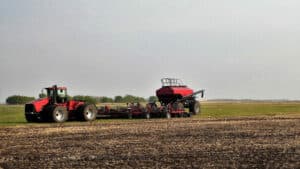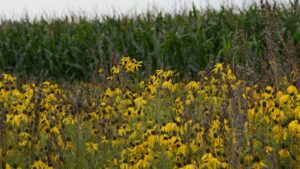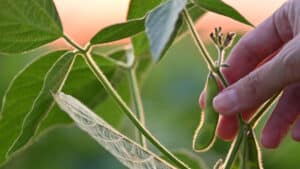A rapidly evolving sector of the industry, seed treatments have undergone continuous improvements since their introduction in the 1970s. Today, the efforts are focused on reducing dust from treated seeds.
Stewardship of seed treatments is not a new concept to the industry, but stakeholders are coming together in a new way to further efforts.
One such effort is the Pollinator Partnership, which works to protect the health of managed and native pollinators in North America.
“This is a unique opportunity for real outreach and understanding the needs of all stakeholders involved in seed,” says Laurie Davies Adams, Pollinator Partnership executive director. “Working together is in everyone’s best interest, but it doesn’t happen often.
“You have to look for overlap in perspectives, and every stakeholder has a different perspective. You have to find where they coincide and work in that space.”
In 2013, the Pollinator Partnership formed the Corn Dust Research Consortium (CDRC) to fund, oversee and advise research projects that further the understanding of best management practices for mitigating seed treatment exposure to honeybees during planting.
“When you apply multiple active ingre-dients, the formulations get more complicated.”
— Palle Pedersen
Organizations such as the American Seed Trade Association, American Beekeeping Federation, the Association of Equipment Manufacturers, Bayer CropScience, National Corn Growers Association, Syngenta and others comprise the CDRC.
According to Davies Adams, the consortium is getting ready to release a major report that looks at long-term effects of seed treatments on bees. Its most recent report concluded that the highest exposure of bees to seed treatments occurred during the approximately two-week planting period.
In addition to collaborative efforts, individual companies continue improving the stewardship of seed treatments throughout the process, from preparation of the seed to application and planting.
Investing Resources
One company that’s made a significant investment in this area is DuPont. To further its stewardship efforts, the company is constructing DuPont Integrated Seed Science Centers.
The first Seed Science Center was built in Wilmington, Del., and has been in operation for several months. Most recently (Aug. 5), DuPont opened the doors to its Johnston, Iowa, facility, and a third facility is planned for South America.
“The Seed Science Centers build on a pipeline of seed treatment products and combinations by enabling DuPont to test new formulations under unique environmental conditions to create tailored treatments that meet specific grower needs,” shares Jeff Daniels, DuPont Pioneer’s Seed Treatment Enterprise global lead for application and agronomy. “These facilities will focus on the products applied to seed, the process used to apply them, and help employees and sales representatives better understand the products and how to properly steward them.”
Daniels explains the facilities will develop recipes that further reduce dust-off by keeping treatments on the seed. “This will allow seed to flow easily through planters, minimize buildup and reduce dust,” he says.
Syngenta is another company that is focused on reducing dust. “When you apply multiple active ingredients, the formulations get more complicated,” says Palle Pedersen, Syngenta Seedcare head of product marketing. “It’s really about the amount of active ingredient you’re putting on the seed that can interfere with equipment, particularly during planting.”
To help with the dust issue, Syngenta makes sure its seed treatment products work with the equipment farmers use. “Farmers went from six- and eight-row finger pickup planters to 36- and 48-row air assist planters, and that has had big implications for the flow of seed and planting speed,” Pedersen says. “We started many years ago to really be sure our products worked with the changes in equipment farmers use, and we’ve had to make some major changes.”
Bayer CropScience, too, is focused on minimizing dust. The company developed Fluency Agent — a seed lubricant for corn and soybeans that replaces talc, graphite and talc/graphite-blended seed lubricants. Research shows that Fluency Agent reduces the amount of insecticide active ingredient released in dust from treated seed during planting by 65 percent.
Through individual and collaborative research efforts such as these, the stewardship practices used by industry will continue to evolve, for the better.












